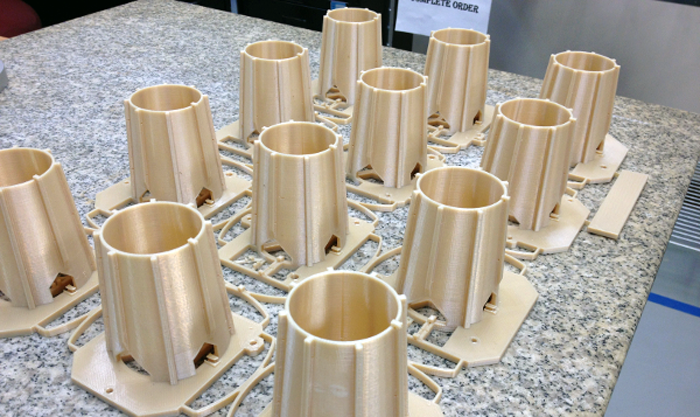3D printing in space is just beginning, but 3D printing for space has been taking place for some time now, with NASA’s Jet Propulsion Laboratory (JPL) well aware of the benefits that 3D printing brings to manufacturing highly specific, high performance parts for space travel. Most recently, the lab turned to 3D printing to create 30 antenna array supports for the FORMOSAT-7 Constellation Observing System for Meteorology, Ionosphere, and Climate (COSMIC-2) satellite mission, due to the low-cost and quick turnaround of the 3D printing process.
Scheduled to launch in 2016, the COSMIC-2 mission will record atmospheric and ionospheric data to enhance weather prediction models and aid essential meteorological research. Typically, JPL would machine parts from astroquartz to create the supports for their satellite arrays, but, to maintain their project timeline and budget and, moreover, due to the complexity of the parts, the research lab opted for 3D printing, performed by Stratasys-subsidiary RedEye. The lab chose Fused Deposition Modeling (FDM) to produce their parts, believing that doing so would yield parts that could best meet the strength and load requirements of the satellite arrays.
VP and general manager of Red Eye, Jim Bartel, said of the project, “Using FDM for a project like this has never been done before and it demonstrates how 3D printing is revolutionizing the manufacturing industry. If this technology can be validated for use in the harsh environment of outer space, its capabilities are seemingly endless for projects here on Earth.”
Their material of choice for the satellite supports was ULTEM 9085, a thermoplastic as strong as aluminum, but with a significantly lower weight. The material has been tested by the aerospace industry and has a flammability rating from the Federal Aviation Administration (FAA), but has not been exposed to outer space. It does, however, meet NASA class B/B1 flight hardware requirements and, with a coating of NASA’s S13G protective paint, should withstand the oxygen atoms and ultraviolet radiation of space.
Strategic account manager for aerospace and defense at RedEye, Joe Smith, hails the ULTEM material, “The intricate design of the arrays and the durability of ULTEM 9085 made additive manufacturing a perfect choice for this project. Not only did it prove the strength of 3D printed parts, but using FDM to build these supports significantly reduced time and cost.”
The COSMIC-2 satellite will see just how well 3D printed parts can survive the outer space and, as it will launch in 2016, the FDM parts will get there before EOS’s laser sintered antenna supports created for the European Space Agency, but not before the CRP SLS parts currently in space on the KySat-2 cubesats, launched by students and researchers in Kentucky earlier this year. Regardless, the mission is a further demonstration of just how 3D printing can survive in even the harshest of industries.
For more details about the role of 3D printing in the project, you can read the entire case study here.
(PS – Just don’t tell Congress that this probably about studying the effects of climate change or else they’ll stop funding it.)



